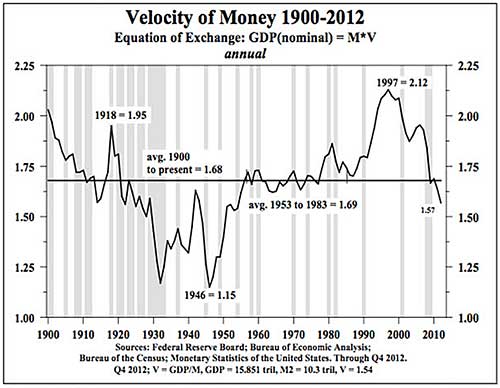 |
I explained why I don’t expect interest rates to rise dramatically over the next 18 months in my two most recent Money and Markets columns.
That sets me apart from other investors — and my colleagues at Weiss Research. But my investment strategy is mine, and others don’t have to agree with me. What’s more, it’s important to test commonly held beliefs with opposing views. Think of how many times a stock didn’t keep rising even though it “should” have. (Apple is a prime example.)
As a 30-year Wall Street veteran — and often a contrarian — I’ve learned that different opinions are a necessity to make a market. That’s because for every transaction there is a buyer and a seller, and both believe they are getting the better deal. But someone has to be right, and someone has to be wrong.
Those who predict rates will continue to climb have a lot of ammunition on their side. They say the Federal Reserve’s pending tapering of its unprecedented stimulus program will lead to a normalization of interest rates. Indeed, mere talk that the Fed will scale back its bond-buying program prompted the yield on the benchmark 10-year Treasury note to surge toward 3 percent from a record low of 1.6 percent just a few months ago.
 |
| In the discussion of interest rates rising(or not), it’s important to remember the fundamentals, even if they’ve gotten out of whack with the Fed’s interference in the markets. |
But since my commentary has resulted in so many inquiries from readers, I thought it would be helpful to discuss what influences interest rates, without getting into predictions. I’d like to hear your thoughts on our Facebook page.
First, I’ll say that I don’t expect inflation to accelerate any time soon. Inflation’s role in setting long-term rates was quantified by Irving Fisher 83 years ago (“The Theory of Interest,” 1930) with the Fisher equation, which says that long-term rates are the sum of inflation expectations and the real rate.
I’ve already unpacked three reasons for why inflation will stay low: The annual change in the core personal consumption expenditures deflator stands at a record five-decade low; the dollar is appreciating; and commodity prices are falling.
Here are two more factors that show inflation can’t ignite in the current economic environment.
‘Money Multiplier’ Slows
First, despite the unprecedented expansion of the Federal Reserve’s balance sheet — from $840 billion in 2008 to more than $3 trillion currently — the amount of money that has actually gone into the real economy to promote business and job growth has been nominal. That’s right: While the monetary base has quadrupled, the amount of money that has made its way into the real economy is growing at an annual rate of 6.8 percent.
How can that be? It’s because of something called the “money multiplier,” which the Fed doesn’t control. The money multiplier is influenced by the lending and borrowing activities of the banks and their customers. And, currently, there is not a lot of activity. In fact, at the end of 2007, the money multiplier was 9, and presently it’s about 3.6.
Thus, there will be no growth in inflation until businesses become more confident and the money multiplier rises.
No ‘Monetary Velocity’
A lack of what’s known as monetary velocity also is damping inflation. Velocity measures the number of times a dollar (or euro) goes through the economic system before it is returned to the bank. Refer to my June 26 column, where I presented an anecdote that explains velocity in plain terms.
In a nutshell, for velocity to increase, any rise in debt needs to create a sustainable productive income stream. But that’s not what’s happening. Instead, most current borrowing is related to financing personal and business consumption as well as to refinance existing debt.
As a result, velocity is at a six-decade low.
In the discussion of interest rates rising (or not), it’s important to remember the fundamentals, even if they’ve gotten out of whack with the Fed’s interference in the markets. In the months ahead, inflation will again become a key gauge that investors follow. Here’s hoping that we can get back to those days.
Best wishes,
Bill


 Bill Hall is the editor of the Safe Money Report. He is a Certified Public Accountant (CPA), Chartered Financial Analyst (CFA) and Certified Financial Planner (CFP). Besides his editorial duties with Weiss Research, Bill is the managing director of Plimsoll Mark Capital, a firm that provides financial, tax and investment advice to wealthy families all over the world.
Bill Hall is the editor of the Safe Money Report. He is a Certified Public Accountant (CPA), Chartered Financial Analyst (CFA) and Certified Financial Planner (CFP). Besides his editorial duties with Weiss Research, Bill is the managing director of Plimsoll Mark Capital, a firm that provides financial, tax and investment advice to wealthy families all over the world.
{ 5 comments }
Read A. Gary Shilling's Age of Deleveraging.
won't being contrary lose you money in the short term? after all, like you said, few in the market remember the fundamentals…
I'm making an informal prediction. If military spending doesn't ramp up, we're in for a tough time of it. If it does ramp up, well, hello, expansion!
interestingly, Apple is not done. I find your article unbelievable; however, hope you are right.
If the experts can't agree what hope do us mere mortals have.
I for one am sick of losing money on so called sure things.